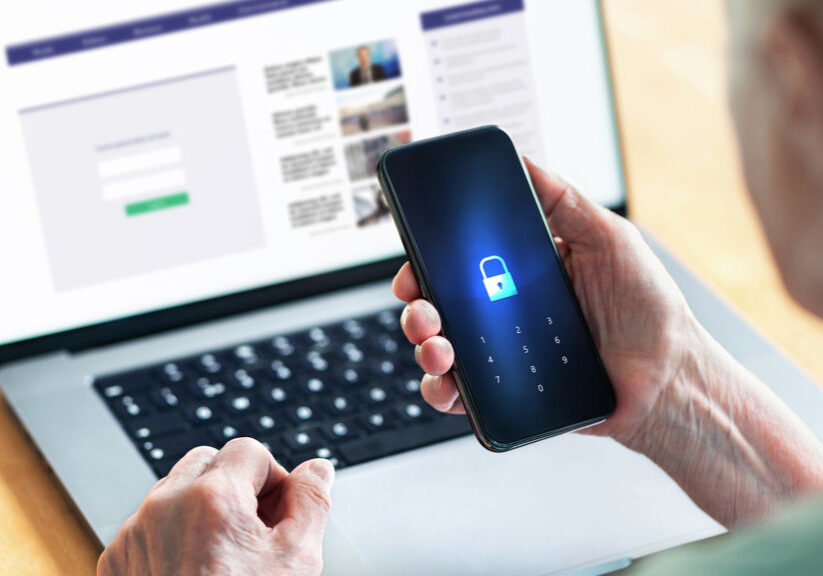9 Tips to Help Keep Your Accounts Safe
If you’ve ever been the victim of financial fraud, you know how unsettling it can be. A complete stranger assumes your identity and/or accesses your most personal financial information, wreaking havoc on your life. Unfortunately, in today’s digital age, financial fraud is increasingly common.
Fraudsters take various forms, for example posing as a charity to get donations after disasters such as hurricane Ian. Another may be someone who sounds like a relative or someone you know and trust and asks for money. Then there is money transfer or mobile payment fraud. Have you ever bought tickets to a sporting event from someone online? Did you pay before you got the tickets and they never arrived? That is an example of money transfer fraud.
Many people moved or purchased new homes last year, which presented another opportunity for fraudsters. For example, homeowners who were near closing on their new home received an email from a fraudster that looked like an email from the title company or escrow office and provided wire instructions for closing.
And any conversation about fraud wouldn’t be complete without talking about phishing — not the kind with a pole and lure but rather the kind where someone steals your passwords, account numbers and Social Security number. Phishing usually looks like an email or text message from what appears to be a legitimate source asking you to click a malicious link to verify your account information, which then gives the fraudster access to your computer.
It’s vital to take steps to protect your identity and your accounts. Following are several tips to help keep you safe.
1. Monitor your accounts
It’s important to keep an eye on all your financial accounts in order to quickly identify any fraudulent transactions. Make it a priority to log into your accounts at least a couple times a week to review any recent transactions. You may also be able to set up online banking alerts to notify you of any unauthorized changes or transactions.
2. Use strong passwords
Be sure to select strong passwords or use passphrases that are difficult to guess, and change them often. Use a combination of letters, numbers and special characters. Choose different passwords for various accounts so that if one account gets hacked, the others are still protected. Even though it may be tempting to make yourself a cheat sheet, don’t keep a list of passwords under your computer keyboard or in another unsecured location.
3. Use multifactor authentication
When available, this extra security measure requires two or more credentials to access your account. The extra credentials usually fall into one of three categories: something you know (like a passcode or pin), something you have (like a one-time verification passcode) or something you are (like a scan of your face of fingerprint). Many cell phones offer fingerprint or facial authentication.
4. Don’t use public Wi-Fi
Use a password protected Wi-Fi network or your cellular data if you need to check your email or log in to banking/financial apps.
5. Access your credit reports
Each of the major credit bureaus, Equifax, Experian and TransUnion, allows consumers to access one free report each year. Take advantage of this annual opportunity to check these reports and make sure there are no unexpected errors.
6. Shred all documents
Your bank statements, bills and other financial documents contain valuable information that can provide fraudsters with exactly what they need to access your accounts. If you’re clearing out your filing cabinet, be sure to shred old statements and documents before putting them in the trash. Or, skip the paper documents all together and sign up for online statements and billing.
7. Be cautious with emails
Be careful about what emails you open and click on. Some may contain fraudulent links and/or malware. If you receive an email regarding your finances that appears to be from your banking institution, the IRS or another organization, call the toll-free number of that institution (the one listed on the company’s website, not a phone number in the suspicious email) to verify the email’s authenticity prior to taking any action.
8. Maintain anti-virus software
Your computer should be equipped with strong, updated security software that regularly checks for suspicious and harmful activity. Never connect to the internet without strong security software in place.
9. Keep all software up to date
It’s important to regularly update your software and operating system to help ensure you’re accessing the latest bug fixes and security features. You should have automatic updates enabled for your operating system. It’s also important to use a well-known internet browser, such as Chrome or Firefox, as they’re frequently updated with new security protections.
Take these actions if you suspect you’re a victim of fraud
- Notify your bank, lenders and any other financial institutions of the fraud.
- Update all your online passwords.
- Dispute fraudulent transactions with the applicable institutions.
- Report the fraud.
- – Notify local law enforcement and your state’s attorney general. You may need to file a police report.
- – Contact each of the major credit bureaus (Equifax, Experian and TransUnion) and request that a fraud alert be placed on your file. To do so, you may need to provide proof you’ve reported the incident to law enforcement.
- – File a complaint with the Consumer Financial Protection Bureau.
- – File a complaint with the Federal Trade Commission (FTC) or the FBI Internet Crime Compliant Center, if necessary.
- – File a complaint with the United States Postal Inspection Service if any fraud-related communication was sent via U.S. mail.
If you’ve been a victim of financial fraud or would like to take steps to prevent future fraud, Creative Planning can help. Contact your wealth manager for help or schedule a call with a member of our team.


